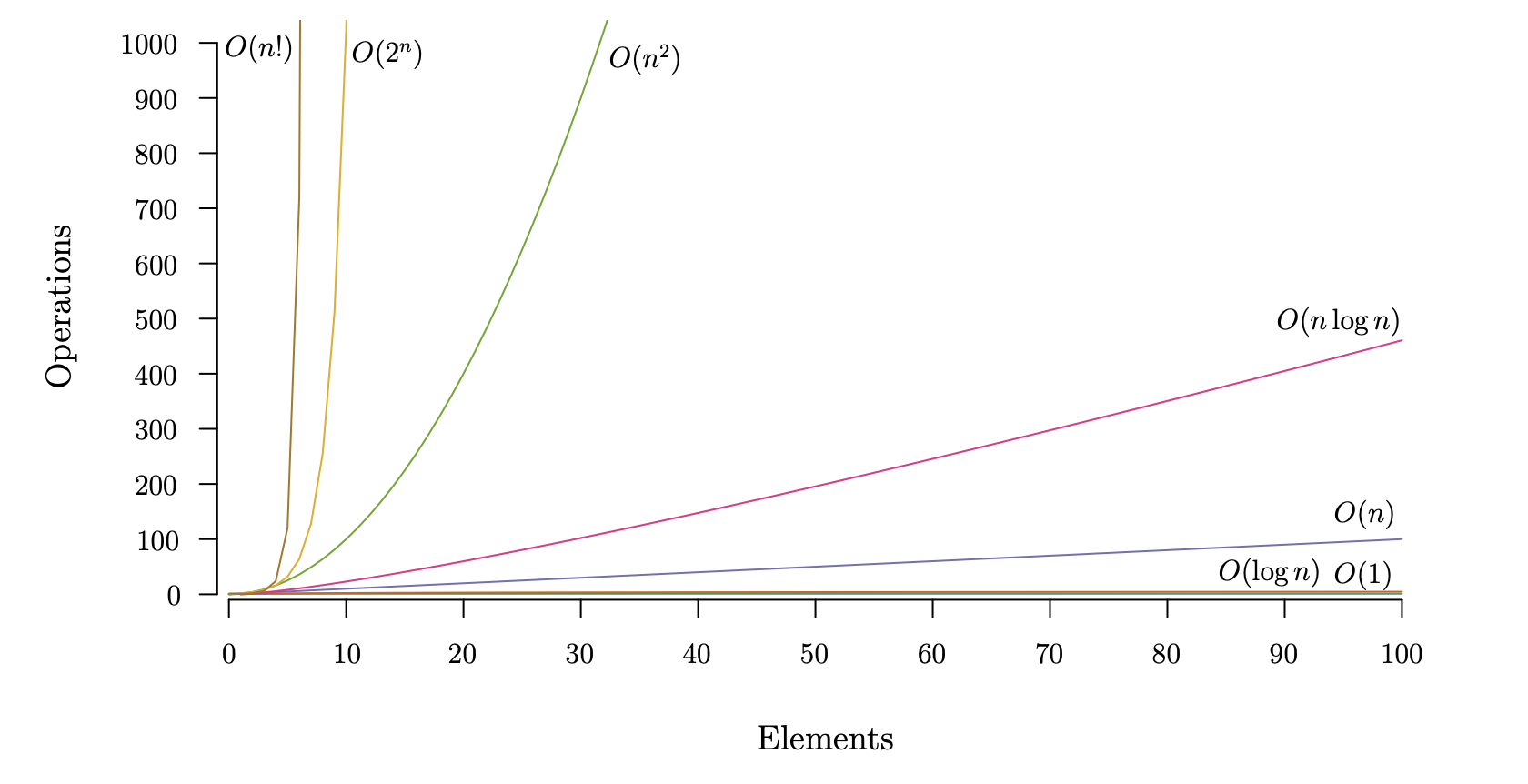| title | description | hide_table_of_contents | keywords | |||
|---|---|---|---|---|---|---|
Time Complexity |
Time Complexity is one of the important measurements when it comes to writing an efficient solution. |
true |
|
Time Complexity is one of the important measurements when it comes to writing an efficient solution. It estimates how much time your solution needs based on some input. If your solution is too slow, even it passes some test cases, it will still consider it as a wrong answer.
The time complexity is denoted by Big O notation. Normally,
| Input size | Time Complexity |
|---|---|
|
|
|
|
|
In the following case, the time complexity depends on
for (int i = 0; i < n; i++) {
// do something
}In the following case, the time complexity depends on
for (int i = 0; i < n; i++) {
for (int j = 0; j < m; j++) {
// do something
}
}In the following case, the time complexity is
As sqrt() returns double, it would be safe to use
$i * i <= n$ to check the condition instead of using$i <= sqrt(n)$ .
for (int i = 2; i * i <= n; i++) {
// do something
}